Nighttime Incontinence: Know More. Do More.
This post was reviewed by our Director of Clinical Excellence and Oversight.
Incontinence in general, and adult bedwetting (also known as nocturnal enuresis) in particular, can be troubling and dispiriting for those who live with it, and for their caregivers. One of the challenges is that there’s no single cause—many factors are at play. But with determination, the right care plan, and the right products, things can get a lot more manageable. Let’s dig in.
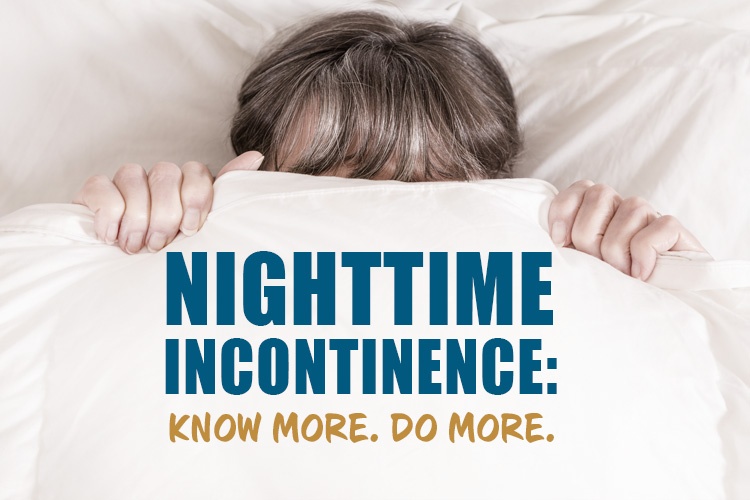
Oh No, Not Again!
Adults should be able to go six to eight hours overnight without peeing. But according to the National Association for Continence, one in three adults over the age of 30 makes at least two trips to the bathroom every night. Excessive nighttime urinating is known as nocturia. Although the problem is typically worse in seniors, it can affect younger adults as well.
Ideally, a person awakened in the night with the urge to urinate, would make it to the bathroom in time and return to sleep with no drama. But for some people an accident leaves them wet and miserable and leaves the bed a mess. That’s known as nighttime incontinence or nocturnal enuresis. It not only affects the quality of a person’s sleep, it can also affect the quality of their life and the life of anyone they are sharing a bed with.
There are several explanations for excessive nighttime peeing:
- Polyuria: Your body produces too much urine over a 24-hour period.
- Nocturnal polyuria: Your body produces too much urine at night.
- Bladder storage problems: Your bladder does not properly retain or release urine.
- Mixed nocturia: Some combination of the above.
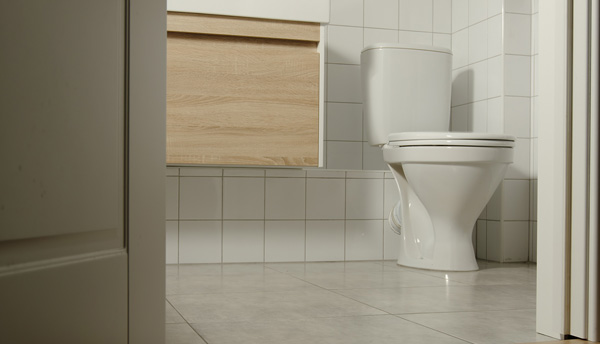
Sometimes, the issue is related to certain medications or health conditions like diabetes, high blood pressure, heart disease, vascular (lung) disease, bladder obstruction, and restless leg syndrome. For women, other causes can include childbirth, vaginal prolapse, or menopause.
According to the National Association for Continence, one in three adults over the age of 30 makes at least two trips to the bathroom every night.
Why Go It Alone?
There’s no doubt that incontinence, whenever it occurs, is extremely personal. But that doesn’t mean you should avoid talking about it with a member of your healthcare team. That’s the only way to figure out why you leak and if you need treatment to address an underlying issue.
At the appointment, your doctor will likely conduct a physical examination and order various urine and blood tests. A bladder scan is another possibility—it shows how empty your bladder gets after you go. You may be asked to keep a “bladder journal” that tracks what you eat and drink, your activities, bedtime, and details like when and how much you pee, leak, etc.
If lifestyle changes aren’t enough, medication may be an option for your nocturia and resulting incontinence. Some drugs reduce the amount of urine your kidneys produce. Other medications can help correct an overactive bladder.


Your doctor may ask you to keep a “bladder journal” that tracks what you eat and drink, your activities, bedtime, and details about peeing and leaking.
Practical Steps You Can Take Today
Whether you gulp too much water before bedtime or have an underlying health condition, there are steps you can take to minimize sleep-robbing overnight accidents. Preparation starts with having the right supplies on hand. For those with Medicaid as their insurance, Home Care Delivered can be your headquarters for high-quality products that are absorbent, discreet, and comfortable. (When we opened for business 25 years ago, our very first products were for incontinence, so we get it!)
HCD carries leading brands like McKesson and First Quality, and we have products that include bladder control pads, protective underwear, briefs, reusable underpads, and skin care products and wipes. You may also want to source mattress and sheet covers that simplify cleanup.
Other tips that may help:
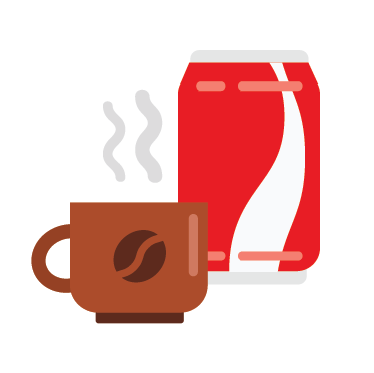
Avoid caffeinated beverages like coffee, tea, and carbonated sodas.

Reach for high-fiber snacks like pears, apples, and whole-grain crackers as constipation can contribute to urinary issues.
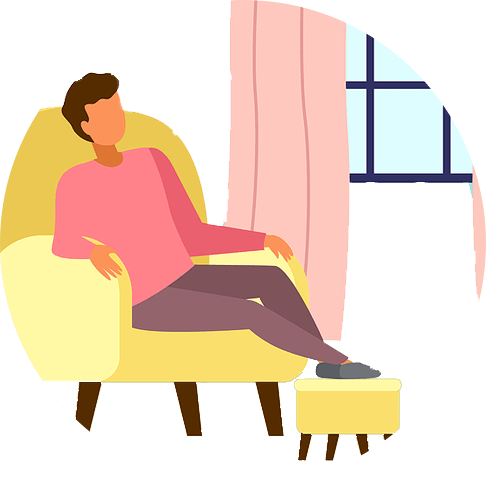
Elevate your legs to help redistribute fluids throughout the body.
Keep the walkway to the bathroom clear and well-lit to prevent falls; get rid of throw rugs and other fall hazards that might block your path.

Consider a bedside commode or urinal.
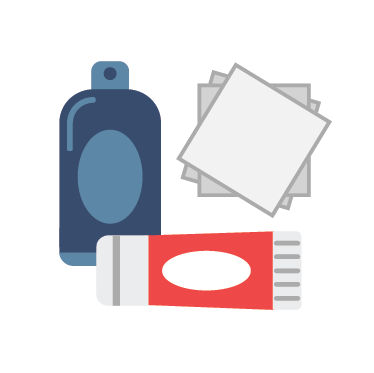
Keep cleanup supplies (wipes, gloves, skin care products) handy for you or a caregiver.
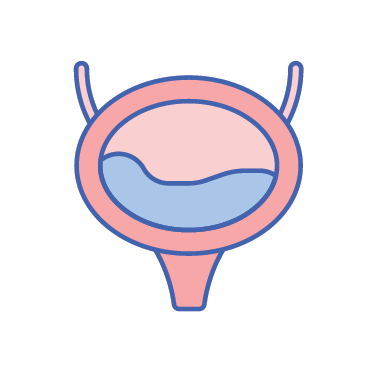
Strengthen the muscles of the bowel/bladder region (pelvic floor) with exercises known as Kegels, which involve squeezing and releasing the muscles while you sit. Read more about how to perform Kegel exercises.

Try setting an alarm to wake up during the night to use the bathroom. If you find you are wet before the alarm rings, set it earlier until you find the ideal time.
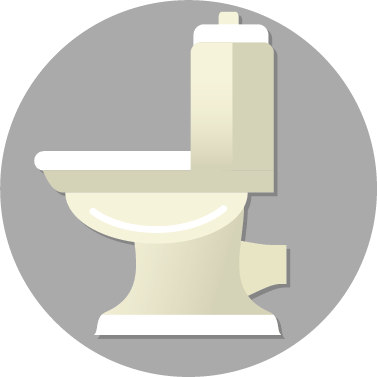
Keep the walkway to the bathroom clear and well-lit to prevent falls; get rid of throw rugs and other fall hazards that might block your path.
Drier Nights, Better Days
If you’ve been having overnight accidents and are tired—literally and figuratively—of the hassle, it’s time to take charge! A visit to your healthcare provider and a call to a member of the HCD incontinence team will lead you in the right decision. We’ll help match the need with the product. We’ll even handle the paperwork, and quickly get your order filled and on its way to you—in discreet packaging, of course!
Call today to enroll at 804-885-4101. Or simply enter your phone number on the bottom left of the screen and we’ll give you a call. Let’s work together to get you back to long nights of dry, restful sleep!
Please note: Medicare does not cover incontinence supplies at this time.

Get Incontinence Supplies Online With Medicaid
No Credit Card | Fast Delivery | 100% Discreet
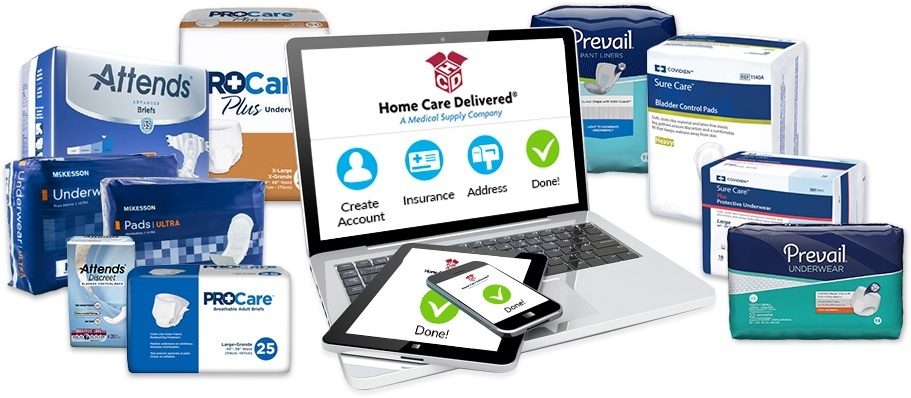
Disclaimer:
Unless otherwise noted, the recommendations in this document were obtained from the sources indicated. Be advised that information contained herein is intended to serve as a useful reference for informational purposes only. HCD cannot be held responsible for the continued accuracy of or for any errors or omissions in the information. All trademarks and registered trademarks are the property of their respective owners.
